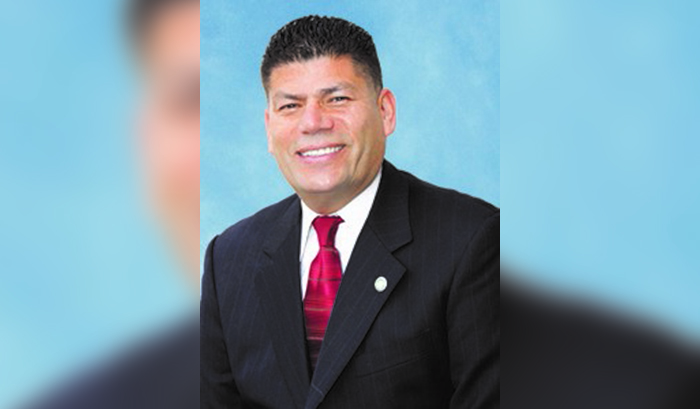On an evening unintentionally but mainly devoted to befoggery in Council Chambers, Vice Mayor Gary Silbiger appeared to be sailing toward the most significant victory of his two terms in office.
Plenty of slogging lies ahead for the Vice Mayor. But, after seven years of persistence and passion, Mr. Silbiger may be within weeks of a cherished populist goal.
On the downside, confusion and misdirection were the dominating forces at play last night.
At the end, City Council members and Asst. City Manager Martin Cole all were shaking their heads. After 3 hours of generally collegial discussion, they still were uncertain exactly what had been accomplished or how to proceed on two strongly amorphous but toxic hometown subjects, public notification and early community involvement in development projects.
Instead of debating the topics separately, both activists and Council members treated them as inextricably related. Since both subjects are replete with abstractions and subjectiveness that can be difficult to quantify, Mr. Cole and the 5 Council members scrambled to unwind the rhetorical stew that had been created.
Throughout his tenure, Mr. Silbiger, with fiery, unyielding commitment, has contended that the pocket-sized weekly turnout for City Council meetings is a blot on Culver City that is chiefly attributable to an inept system of public notification by City Hall.
He has argued that many more people would be present if only they knew the weekly program.
More recently, he has enthusiastically seized the initiative on the almost 2-year-long organized community outcry for earlier residential involvement in building projects — since 99 percent of building projects spark homeowner protests.
Making a precise accounting of what was cumulatively achieved could be a job analogous to a blind man tabulating snowflakes in Alaska by their configuration.
What had been advertised as an evening of bell-ringing clarity on these two subjects sank, instead, into a vague mess
One underlying problem was that what had been billed for about a month as a Town Hall meeting quite inarticulately morphed into a standard City Council meeting.
No fanfare or any kind of announcement was made. It just happened.
This change was important because it drastically altered the format.
A Huge Difference
Instead of community members being able to casually converse with City Council members under the Town Hall format, they were reduced to standing before the dais, as they do on every other Monday night of the year, and declaring their opinions without benefit of direct feedback.
The final score, an exact accounting, remains slipperily elusive this morning.
The single concrete change in City Hall’s already elaborate public notification process appears to be that, at the behest of Councilman Chris Armenta, a computer may — it is not definite —be installed at the rear of Council Chambers.
This change of furniture is intended to stimulate members of the weekly City Council audience to input their email addresses, thereby qualifying them for City Hall’s current 900-person email notification list.
Since the makeup of Council audiences arguably changes little from Monday to Monday, no provision was announced for reaching a broader segment of Culver City.
How badly is an upgrade in public notification needed?
While the answer remains open-ended, weeks of tub-thumping, widely distributed announcements and rallying cries brought out a typically small crowd of familiar faces.
Fifteen persons showed up to speak at the Town Hall/City Council assembly, and most, but not all, thought the public notification machinery should be refined.
Mainly, It’s About Regulars
City Hall already has in place a complex, richly detailed notification system that is so extensive three staffers needed 30 minutes to skeletally describe it to last night’s audience.
Further, in the last 2 years, City Hall has invested a whopping $565,000 to figuratively — and insistently — knock on the doors of community residents, trying to lure them into City Council meetings.
Still, most members of the weekly audience are familiar enough to call each other by name, and, in some cases, by shoe size.
For Vice Mayor Silbiger, the more critical point about last night’s gathering was that there seemed to be unusually wide sentiment among colleagues for his fiercely held convictions on expanding the notification apparatus.
After starting as a single, remote voice, Mr. Silbiger not only has attracted a consensus, but a fairly eager one, proof of which was that, perhaps for the first time, not a dissenting voice was heard.
If concreteness is the barometer, then an adjustment would be in order. But there is undeniable progress on both fronts for Mr. Silbiger’s pet causes.
A Message of Hope and Change
Although the formulations were bogged down in abstractions-still-to-be-debated, the following unofficial changes were agreed upon by the City Council:
• Developers either will be encouraged or ordered to meet with neighbors before launching a project.
• Development applications may be posted on the city’s website, culvercity.org
• And for the thorniest subject of all, a Community Advisory Committee is being promoted by Mr. Silbiger, Mr. Armenta and Councilman Mehaul O’Leary, which may make it a done deal since they represent a majority. Equality, egalitarianism and influence were mentioned as principal committee attributes.
Staffers are to return in about a month with streamlined formulations gleaned from this political stew.
Mayor Scott Malsin pronounced the meeting productive. “I really was pleased by the outcome,” he said. “We already have an extensive public notification system, but there always is room for improvement. Now we have broad agreement on how to make the system even better.”






